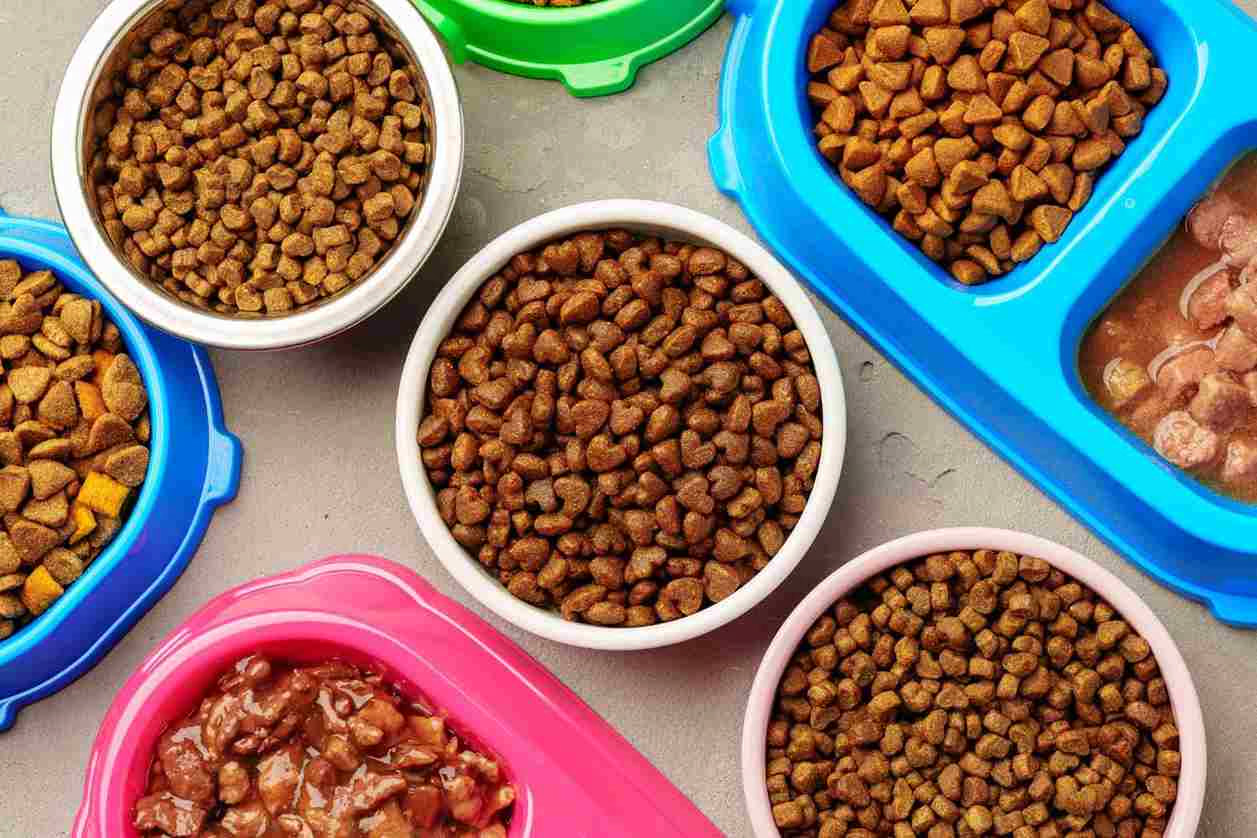The pet food industry is continually challenged with anticipating future trends and addressing evolving expectations from pet owners, such as a heightened focus on the environmental impacts of the products they purchase—from where and how ingredients are grown to how the foods are produced and packaged. At the same time, pet food brands are navigating ever-evolving regulations to reduce their own environmental impact, while also addressing increasing consumer demands for sustainability.
Environmentally conscious consumers as well as people choosing plant-forward lifestyles are fueling rising interest in alternative proteins—including plant-, insect- and cell-based sources. For instance, 42 percent of global pet owners say they want to purchase pet food with sustainably sourced ingredients, and one in five pet owners like to see plant-based or vegan claims on pet products, according to The Humanization of Pets 2023, a report released by market research firm FMCG Gurus. Brands that seize and invest in this new growth frontier will gain a competitive edge to meet pet owner demands.
Adopting alternative proteins
Plant- and yeast-based proteins can be used in pet food and treats to supplement or replace animal proteins. Even insect protein, like dried black soldier fly larvae (BSFL), is being used in some pet foods today. However, like the human nutrition market, reassurance is needed about the taste and nutrition of pet products made with novel ingredients to influence consumer buying behaviors and garner acceptance. ADM, a global leader in innovative solutions from nature, is investing in research to support the inclusion of alternative proteins in pet food.
For example, ADM partnered with researchers at the University of Illinois to determine the biological availability of essential amino acids from various plant- and yeast-based ingredients for use in dog and cat foods. The research, which appeared in articles published in the Journal of Animal Science and Journal of Translational Animal Science in 2020, found that dogs and cats were able to digest and absorb plant-based protein sources, such as soy, just as well as those of traditional animal protein.
Notably, ADM conducted a canine feeding study to better understand the nutritional value of flexitarian and vegan dog foods compared to conventional dog food containing animal-based proteins. In the study, dogs were assigned to one of four test foods: a conventional dog food as the control, two flexitarian foods formulated with either pea protein or soy protein and a vegetarian food. Results, published in a 2024 ADM Technical Bulletin, demonstrated that flexitarian and vegetarian dog foods, formulated with low or no inclusion of animal-sourced ingredients, can effectively meet the nutritional needs of adult dogs. These diets were shown to be palatable, digestible and supported a healthy gut microbiome in dogs.
"Sustainability efforts, such as emissions reductions, are a key factor both upstream and downstream of the pet specialty sector because environmental impacts are felt all along the supply chain."
Insect proteins are taking off
Among the insect-derived ingredients currently used in pet products is the black soldier fly (Hermetia illucens). Agtech company Innovafeed is a leading producer of black soldier fly larvae ingredients. Hilucia Protein and Oil contain unique components, including lauric acid, bioactive peptides and chitin. Lauric acid is a medium-chain triglyceride, a fatty acid prevalent in coconut oil, and is being studied for its potential benefits. The black soldier fly expresses over 50 unique bioactive peptides, which are small proteins with unique properties. Chitin acts as a dietary fiber to support digestive health. These components are in addition to the highly digestible essential amino acids that help dogs and cats meet their requirements.
ADM and Innovafeed collaborated on a research study carried out at the University of Illinois that investigated the protein quality of BSFL in dogs. The goal of the study was to determine the suitability of BSFL as a nutritious substitution for other commonly used protein ingredients in pet food. One trial measured the digestible indispensable amino acid score (DIAAS), a score based on amino acid digestibility that is used to assess protein quality. DIAAS values for Hilucia Protein were compared to scores for chicken meal, a high-quality common ingredient in pet food, and powdered egg, considered the gold standard for protein quality. Results demonstrated that Hilucia Protein is a suitable substitute for chicken meal in pet foods.
A second feeding trial examined dog diets that were specifically formulated for this research, including a controlled diet made with chicken meal, a diet that included 15 percent Hilucia Protein, and another test diet that included 30 percent Hilucia Protein. These levels represented using insect protein as a partial substitution for chicken meal and one that replaced chicken meal entirely. Findings indicated that the Hilucia Protein at both 15 percent and 30 percent inclusion was well accepted by the dogs. Additionally, all the diets had average fecal scores between 2 and 3, which is considered ideal. Researchers also noted that macronutrient digestibility values were very similar between the three diets, again suggesting that Hilucia Protein performs similarly to chicken meal in dog diets.
Furthermore, a 2024 ADM Outside Voice survey of U.S.-based dog and cat owners found consumers can be educated to enhance their likelihood of serving pet food made with insect protein. Initially, only 12 percent reported being "completely likely," while 43 percent expressed being "not likely at all" to feed their pets insect-based food. When asked the question again after receiving educational statements covering nutrition, safety, ethics and environmental benefits, 42 percent became more willing to consider purchasing insect-based pet food. This increase in consumer acceptance suggests that there is potential for growth in the market for insect-based pet food. This research is summarized in a new white paper, Pet Parent Perceptions of Insect Protein in Pet Food, and available in ADM's new Pet Nutrition Customer Academy on adm.com.
A real-life example of this education recently became reality with Innovafeed's "Powered by Hilucia" label being used by brand partners, Jiminy's and Arch Pet Food, that incorporate BSFL ingredients in their products.
Sustainability in the supply chain
Sustainability efforts, such as emissions reductions, are a key factor both upstream and downstream of the pet specialty sector because environmental impacts are felt all along the supply chain. Responsible sourcing of ingredients for pet products may include regenerative agriculture practices with soybean crops from field to market. As another example, manufacturing facilities can draw on renewable energy or focus on packaging made with recyclable materials.
Besides its alternative source of proteins and oils for pet diets, Innovafeed employs an "industrial symbiosis" production model. Indoor insect farms will be strategically located alongside grain processing facilities—such as ADM's corn processing plant in Decatur, Ill.—to upcycle grain byproducts as feedstock for Hermetia illucens, eliminating the need for energy to dry the feedstock and trucks required for transport.
Additionally, the Pet Sustainability Coalition (PSC), a nonprofit organization that strives to advance business through profitable environmental and social practices, is dedicated to creating a more sustainable pet industry by providing assessment tools, strategic support, accreditation and events. Members of the coalition include consumer brands, ingredient suppliers like Innovafeed and ADM, pet trade media, retail stores, packaging companies and more.
Tomorrow's innovations today
When presented a choice, more consumers are opting for sustainable and healthy options for themselves and their pets. Plus, a majority of pet owners say they are trying to make a difference to the environment through their buying habits. With more pets in the home than ever, there is a growing urgency to provide pet products that also support a circular economy.
For instance, ADM Ventures, the corporate venture capital division of ADM, has invested in startups like Bond Pet Foods to continue expanding available protein sources and responsible production practices in the pet nutrition sector. Bond Pet Foods will employ precision fermentation technology to make nature-identical chicken and other meat proteins for innovative pet food applications. Remarkably, this precision fermentation process requires no animal proteins.
With innovations such as these, the pet product market will continue to advance toward sustainability in the race to address the needs of environmentally minded consumers.
Source: Pet Product News
You could be interested: A to Z of Pet Food: Oils & Omegas
Other microingredients
20/05/2025































